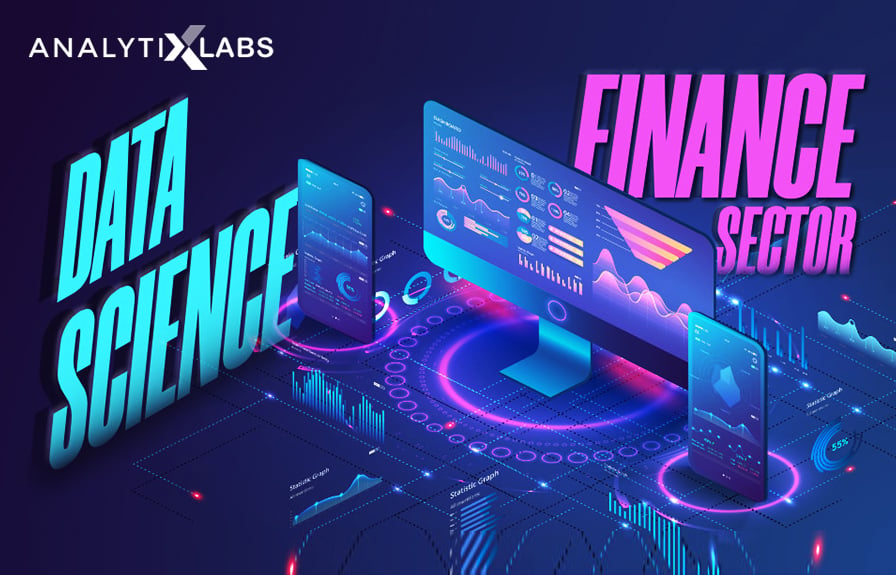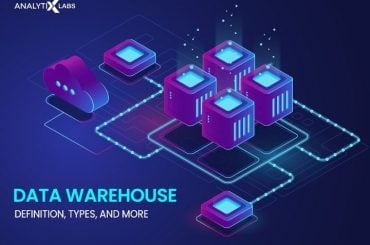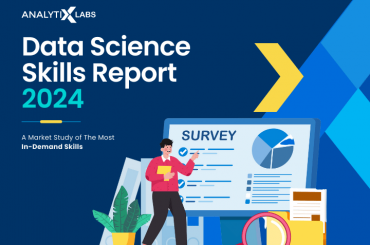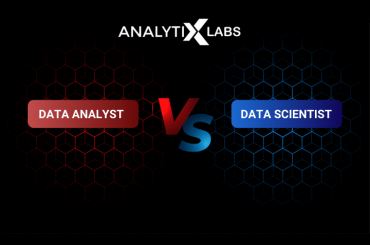Data science has the power to mitigate risks in the finance industry, the one important aspect which makes data science in finance so much essential. Professionals gearing up for a career in data science will surely benefit from knowing the underlying phenomenons and processes of using data science in finance. After all, this opens up new avenues to explore in your career.
While data science is increasingly used in multiple domains and industries, the impact has grown manifold times. Domains that were otherwise indifferent to the progress of data science, have started to accommodate data science in its functioning. The advantages of data science, however, were recognized by the finance industry long back. There has been rapid adoption of using data science in finance since then, putting data science in the core functioning of the industry. Let’s dig into how data science in finance is changing the finance industry.
Why finance domain needs data science?
Data Science in general refers to the creation of models through which patterns are recognized and predictions are done. It often requires labeled data through which it understands the relationship between multiple predictors and a target variable. Here techniques such as statistical modeling, Machine Learning and Deep Learning (Artificial Intelligence) are used to solve numerous business issues via predictive models.
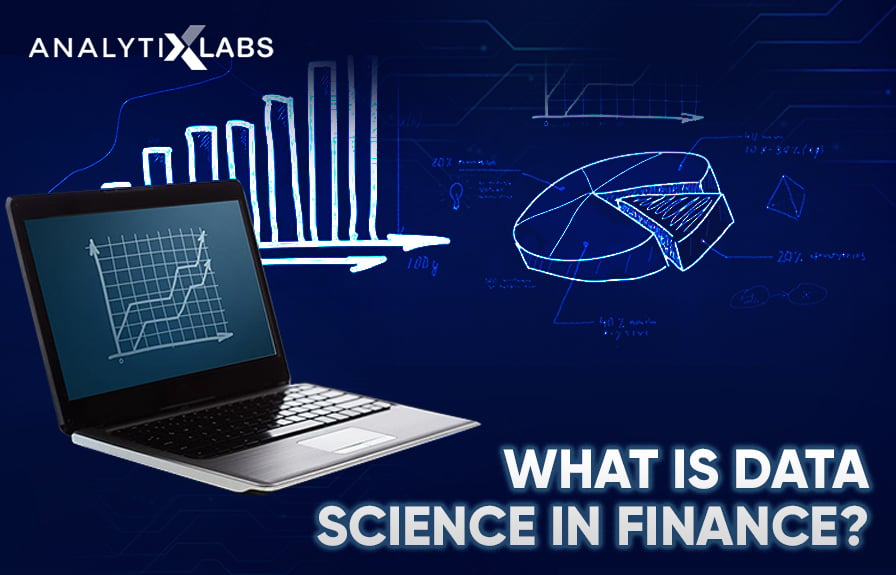
The use of data science in the finance industry is similar, however, it just differs in the scope of problems and the type of data that it deals with. In finance, data science helps a financial organization to provide avenues where profit can be maximized, risks can be minimized, new investments can be made, etc. This is done by identifying patterns found in the previous data and using them to predict a future event.
Unlike other domains, the use of data science in finance is highly strategic.
Other domains often use data science to solve objective problems such as image classification or task automation. However, in finance, a high level of interpretability along with accuracy is required. The results of a data science project are often referred to directly by high-level leadership to make strategic decisions that can significantly alter the future course of a financial organization. This is the reason that data science applications in finance consider all types of techniques which range from high interpretable statistical techniques to highly accurate but black-box deep learning techniques.
Data science in the finance industry is also useful because the finance industry is not a homogeneous group. It is comprised of multiple types of organizations such as investment companies, credit card companies, banks, insurance companies, mortgage firms, and organizations involved with the Share market.
Since the industry is so dynamic, data science has evolved to be a highly flexible and adaptive form of discipline.
Understanding the concepts of data science is easier than you think! Now you can enroll in our course in Data Science and PG course in Data Science course to get a jump start in your data science career.
Uses & Applications of data science in finance
Increased adoption of data science in finance is because of the abundance of high-quality data that has predictive capabilities. The finance industry has embraced data science for this reason, much like every other domain. Financial companies are integrated into the digital world which means all browsing activities are automatically captured leading to humungous amounts of data. Now, it makes more sense to turn to data science – the science which enables companies to find patterns from this huge data set and predict business patterns that are consumer-driven. Like every other domain, the finance industry also benefits from these insights that help them offer tailored upselling products and personalized financial services.
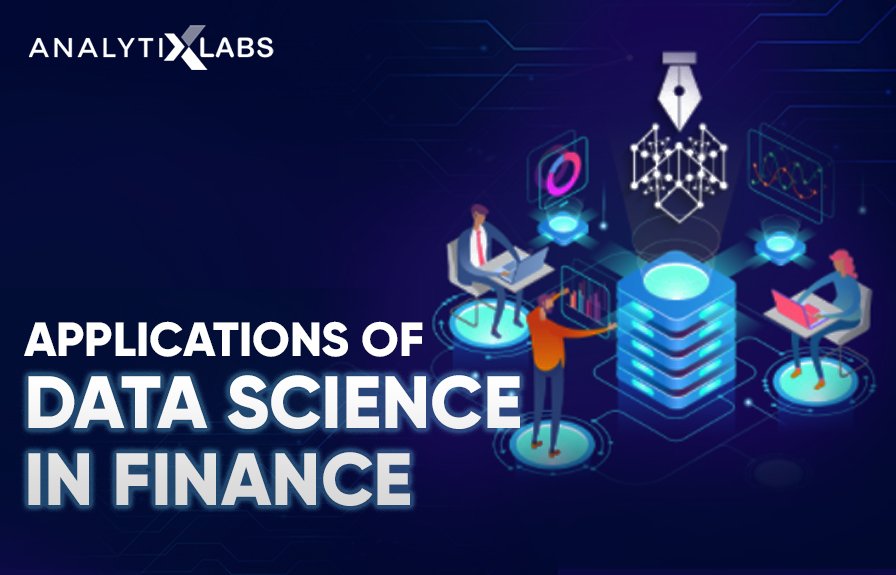
Data science has helped the finance industry improve three core aspects in recent times –
- End-to-end customer experience
- Information available to employees to make an informed decision
- Making activities and operations effective
Data science has a myriad of applications in the financial domain. However, all of them revolve around the three core aspects discussed above. To understand how data science is lending power to the finance domain, it is important to know how a data professional is employed in a financial organization; especially when there is an economic downturn and a drop in economic growth.
How is data science applied in the finance domain?
During an economic downturn, data science acts more like a rescuer – enabling organizations to figure out how to cut down costs and increase efficiency. It helps financial organizations sail through recessions and other negative economic events for longer. This is probably one of the most crucial applications of data science in the finance domain. Other applications include:
1. Risk analytics
After the 2007-2008 financial crisis, risk analytics have become a hot topic in the finance domain. Risk analytics leverages data science to let a company know about the potential risks that can jeopardize its existence. It includes facets such as:
- Understanding competitors
- Staying updated with environmental changes
- Pitfalls when investing a huge amount of money
- Challenges in rolling out new products, etc.
It is a tough challenge to come up with models that can explain the risks in simpler terms to the leadership and employees. However, companies are willing to take the challenges head-on because it helps them survive at the end of the day.
2. Consumer analytics
Financial companies have a lot of products that they want to upsell. For instance, a bank will always try to push sell a credit card. To do this, they need accurate data about their customers. For instance, trying to sell a loan to someone who is already repaying a loan is useless. Rather, it makes more sense to push a consumer who visited the loan details page some time back and has enough capital in its account. This data is available to financial organizations through data science. Data Science helps in classifying customers not only based on their characteristics but also based on their demographic information which often helps an organization to create tailor-made products targeting particular customer groups.
3. Fraud detection
The size of the financial companies has grown over the years and so is the number of transactions that take place. While technology has eased our lives, it has also breached privacy and has increased the chances of being a victim of fraud and scams. Financial institutions take help from data science to develop models that can identify a fraudulent transaction. Credit Card frauds are the most common ones and data science techniques such as anomaly detection are applied to identify the fraud early on and alert the customer before the damage escalates.
4. Algorithm trading
One of the most difficult and highly lucrative applications of data science in the financial industry is the use of ML and AI-based models to predict stock prices. This helps hedge funds and other investment firms to make investments and gain large profits. This is a highly difficult application of data science and requires extremely sophisticated modeling frameworks.
5. Customer service
Financial services are out-and-out customer-centric. There is nothing more important than ensuring customer satisfaction for a financial institution. This is simply because consumers invest their hard-earned money, and they expect to be heard immediately. From instant query answering to resolving grievances, financial institutions require to be on their toes round the clock. Issues like pending claims, incomplete transactions, missing funds, etc. can cause consumers to go into a frenzy.
Data Science helps in solving these issues by automating the traditional customer care experience through chat boxes that can provide certain information immediately without making the customers wait in queue for their turn to talk to a customer agent. This is where data science-based concepts of Natural Language Processing and Deep Learning become helpful.
6. Personalization
Data science helps in quickly understanding where the customer is coming from, and accordingly device a personalized experience. Such an experience makes a consumer feel that the organization understands its needs. Consumer information like background, interests, likes, dislikes, financial stability, and more help in offerings tailored conversation and experience to the consumer. This makes the discussion on-point and the consumer feels valued as well. Recommendation engines play a pivotal role, in this case, to help financial organizations make more informed decisions when dealing with customers.
7. Data management
Like many other domains, the financial domain also generates a large amount of data with very high velocity, volume, and also variety. Financial institutions keep track of all the transactions that they and their customer make which provides a very large volume of often structured data. Nowadays, however, data from social media, blogs, news, and other platforms are also captured with is often unstructured. This has led the financial institutions to adopt aspects of Data Science such as Big Data to store data and use various data science-based techniques to make sense out of this structured, semi-structured, and unstructured data which needs to be eventually combined together to give a better picture of the world around them.
8. Credit allocation
A number of financial services are involved in providing funds to the customer. Traditionally the creditworthiness of an applicant is assessed by underwriters and through credit scores which are calculated by credit rating agencies based on their past repayment record. However, with data science, the process of credit allocation can be made much more informed. Smart underwriting decisions can be taken by creating predictive models that not only look at the credit score but also the demographic details and other digital footprints (this can include social media, reviews, or other publicly available data related to the customer) and assess the creditworthiness of the customer.
9. Decision-making
Statistical or predictive Analysis is often done to understand how the assets will perform in the future. This helps financial institutions to make key decisions and reduce the chances of making mistakes. However, as the world is ever-evolving, creating models has become very important – models that not only work well but also adapt quickly when provided with new information. Certain decision problems required more than statistical analysis such as making decisions regarding buying stocks where Machine Learning and Artificial Intelligence-based models can only help. For instance, machine learning can help in stock market prediction.
10. Better fund allocation
Like any other organization, financial institutions also need to keep a track of the budget requirement of the various departments. Data Science can help in allocating this budget by predicting the future needs based on the past record of the department’s spending. This can make money allocation more efficient and less prone to leakages.
Now, let’s see some real examples of using data science in the finance industry.
Best examples of using data science in finance
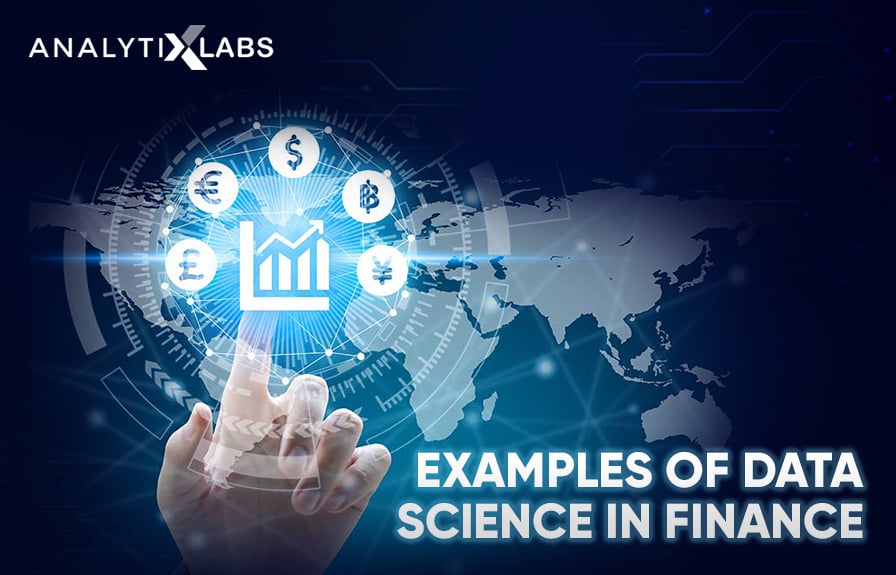
1. Data science in banking
The Banking sector has been one of the early adopters of data science and has highly benefited from its use of data science. Almost all banks currently deploy data science solutions to maximize their profit and mitigate the risks involved in the pursuit of those profits. Not only this, they have also created products keeping in the mind the needs of the customer. This level of insight is available via data science-based models.
One of the examples is Yes Bank, one of the leading Indian banks that adopted data science to know about their customer behavior based on their debit card transactions. This way the bank was able to provide relevant offers making the customers increase their spending by 44%. Similar examples of data science being used in the banking industry include-
- Identification of different customer groups for better targeting of products, offers, and services
- prediction of customer value and loyalty
- investment and risk modeling
- credit allocation
- loan application approvals
- churn analysis
- personal customer support
2. Hedge funds
Hedge funds and other similar institutions that buy and sell stocks to make a profit have benefited hugely from the application of data science. Such institutions have created highly complicated, complex, and sophisticated predictive models that based on historical data, traders’ behavior, and social, economic, and political factors predict the price of the stocks. This way they are able to make accurate decisions regarding the selling or buying of stocks thus maximizing their profits.
One of the examples is Renaissance Technologies, a hedge fund that deployed predictive models to accurately predict the prices of stocks. One of their product known as the Meddalion fund has benefited extremely from such models as it has constantly given higher profits when compared to other similar funds.
3. Data science in Insurance
Insurance companies may not openly acknowledge the use of data science in their internal work but the truth is that in current times, most insurance claims are not assessed by humans but by models. However, as often insurance deals with health and life, a different approach is taken where the claims considered invalid by the models are then investigated by employees to make sure that no individual faces discrimination. While it is difficult to pinpoint a company that openly acknowledges the use of data science in claim approvals, we do know of the major functionalities of data science in this industry. This includes-
- Use of data science in setting the price of insurance premium of a customer (based on the customer profile)
- Identification of fraudulent claims
- Efficient and quick processing of claims (by automating the claim approvals)
- early identification of events that can cause the customer to file claims (for example, healthcare insurance companies alerting the customer of potential health risks that they might have)
- Personalized customer support
- Recommendation of insurance products
- Churn analysis
Data scientists should understand the intricacies of the financial domain to make a mark in this industry. This means, getting a detailed understanding of the domain. Below are some commonly asked questions that we have answered. If you have more queries, reach out to us directly.
Data Science and Finance industry – FAQs
1. What does a financial data scientist do?
Data scientists play an extremely crucial role in the financial industry. They are responsible for providing the leadership with insights through which they can make informed decisions regarding investments. While this is the application of data science in its simplest form, the role of a data scientist is actually much more complex.
A Data scientist has to identify potential data sources and extract and combine the data in a structured format on top of which data science-based products can be created. They also need to clean and analyze this data to provide quick insights.
Once done, they then can identify potential problems in work processes and create models that can solve those issues. This can range from making the operations efficient to making decision-making the process less risky.
2. How do I become a financial data scientist?
Data science in finance requires a specified kind of data scientist viz. Financial Data Scientists. Financial data scientist is a unique job as it required an amalgamation of two fields- finance and data science. What makes it more interesting is that both these fields itself is are an amalgamation of multiple fields.
Finance requires knowledge of accounting, mathematics, and economics whereas Data science is a combination of computer science, statistics, mathematics, storytelling, etc. Thus, for becoming a financial data scientist one needs to be good have a good knowledge of Financial engineering and Machine Learning.
Once you are good at finance and data science, these two pieces of knowledge can be combined and problems found in the financial industry can be solved and consequently one can secure a job as a financial data scientist.
3. What are the top 3 skills of a financial data analyst?
While there are multiple skills that a financial data analyst needs to have, there are three that are a must. The following are the most important 3 skills for a financial data analyst-
- Good Programming Skills: A decent knowledge of common programming language used in the field of data science is required. This includes SQL, Python, R, etc.
- Knowledge of Statistics, Machine Learning, and Deep Learning Algorithms: As predictive models are created by financial data analysts, knowledge of statistical models such as Linear and Logistics regression along with ML and DL-based algorithms such as KNN, SVM, ANN, etc. is required.
- Accounting and Finance: One needs to have basic information about accounting so that they can read the financial statements of companies to have better insights. They also need to have good knowledge of stock and other financial markets. While this is a very deep discipline in itself, one needs to have at least basic to intermediate knowledge so that they can create a solution for the problem faced by the financial industry. Thus, having such knowledge can help the individual effectively understand the problem statement and can effectively communicate the results with their leadership.
Additional reading resources to prep you up:

